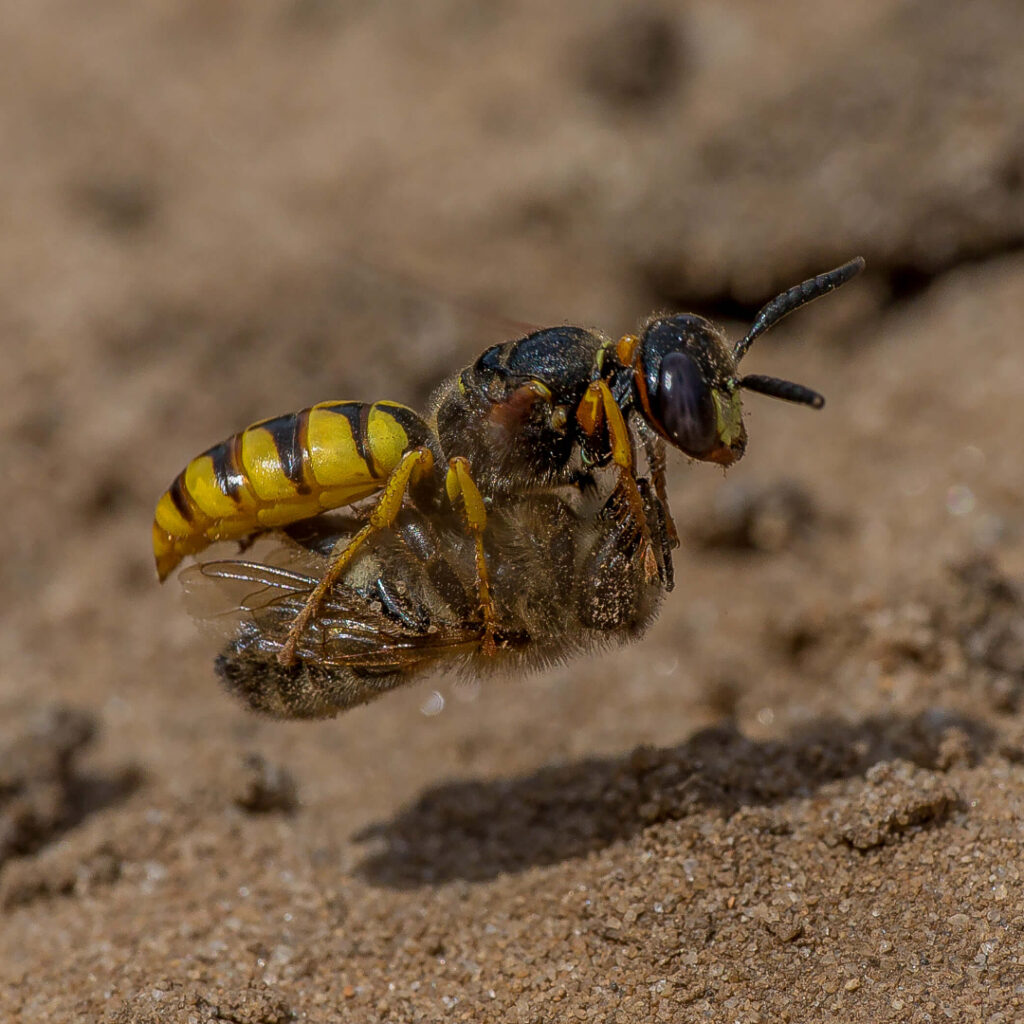It’s been discovered that buff-tailed bumblebees have developed an effective strategy to fend off Asian hornets.
When under attack, buff-tailed bumblebees drop to the ground, causing the hornet to either lose its grip or engage in a struggle until the hornet gives up.
Researchers at the University of Exeter observed over 120 such encounters and found that buff-tailed bumblebees successfully fought off the hornets every time.
Asian hornets are a growing concern for pollinators worldwide. These invasive predators have spread across Europe, and Asia, and even made their way to the United States. Let’s dive into this enthralling world of bumblebees and their fight against Asian hornets.
The Defense Mechanism
When an Asian hornet attacks, the buff-tailed bumble bee doesn’t just sit there. It drops to the ground, pulling the hornet with it. This move either makes the hornet lose its grip or forces it into a ground tussle.
The bee then raises its sting and fights until the hornet gives up. It’s like a WWE match, but with insects!
Although bumblebees can successfully defend themselves against Asian hornets, their presence still negatively impacts bumblebee colonies. In areas with high numbers of hornets, the growth rates of bumblebee colonies were reduced.
Key Points
- Drop and Tussle: Bumble bees drop to the ground, pulling the hornet with them.
- Sting and Defend: They raise their stingers and engage in a fight.
- Success Rate: In over 120 observed attacks, bumble bees repelled the hornets every time.
The Research
The University of Exeter led this groundbreaking study, collaborating with the University of Vigo and the University of Santiago de Compostela.
Researchers observed bumble bee colonies in Pontevedra, Spain, and found that colonies in areas with higher Asian hornet densities grew more slowly.
The research was conducted in Pontevedra, Spain, where commercially reared bumblebee colonies were set up in 12 locations with different local Asian hornet populations.
The colonies were monitored by cameras and weights were measured every two days, and it was found that the colonies in areas with higher hornet densities grew more slowly.
Regarding the low success rate of hornet attacks, the researchers believe that, despite the high failure rate, the hornets’ persistence might make these attacks worthwhile if they occasionally secure a kill.
Moreover, the effectiveness of bumblebees’ defence strategy may be an evolutionary coincidence since they did not evolve alongside Asian hornets.
The Impact
Asian hornets, also known as yellow-legged hornets, have already spread across mainland Europe and parts of east Asia, and their sightings in the UK and continental Europe are at record levels.
These invasive species are mostly known for preying on honeybees, and their increasing numbers pose a threat to pollinators and trigger substantial control efforts.
While bumble bees are champs at defending their turf, they still face challenges. Colonies in hornet-heavy areas experience reduced growth rates. Hornets also compete with bees for nectar, making life tough for our fuzzy friends.
Asian hornets are known to attack insects like honeybees by a technique called “hawking”, which involves hovering outside the bee’s nest and attacking returning foragers. While attempting the same method with bumblebees, they were entirely unsuccessful in the study’s observations.
Challenges Faced by Bumble Bees
- Reduced colony growth
- Nectar competition
- Harassment at flower patches
Evolutionary Coincidence?
European bumblebees haven’t evolved alongside Asian hornets. Their successful defence strategy might just be an “evolutionary coincidence.” Unlike honey bees, who often fall prey to hornets, bumblebees seem to have a better game plan.
Conclusion
Asian hornets are a menace, but bumblebees aren’t backing down. Their unique defence mechanism offers a glimmer of hope in the fight to protect pollinators. However, the hornets still pose a significant threat, making ongoing research and conservation efforts crucial.
Further Reading
For those interested in nitty-gritty science, the research paper is titled “Quantifying the impact of an invasive hornet on Bombus terrestris colonies“. Here are the key facts and takeaways from the study.
Study Setup
- Conducted in August 2021, near Tomiño in Pontevedra, Spain.
- Involved 36 Bombus terrestris terrestris colonies, each with a queen and ~80 workers.
- Additional colonies were used for equipment testing.
- Colonies were screened for pathogens and parasites.
Experimental Design
- 15 field sites were chosen based on local hornet densities and land cover types.
- VespaCatch traps were used to measure hornet activity.
- Water and sucrose feeders were provided for the bee colonies.
Sampling
- Colony sampling occurred every two days.
- Used Dragon Touch Vision 1 cameras for monitoring.
- Temperature and humidity were also recorded.
Statistical Analysis
- Used Random Forest variable importance rankings.
- Employed Generalized Linear Mixed Models (GLMMs) for various analyses.
- Inter-rater reliability was assessed using Cohen’s kappa coefficient.
Variables and Factors
- Hornet-related: Hornet count, presence, duration, predation attempts.
- Bumblebee-related: Colony weight, survival status, foraging frequency.
- Environmental: Temperature, humidity, land cover.
Key Findings
- GLMMs were used to assess the impact of hornets on bumblebee colonies.
- Factors like hornet count, colony weight, and environmental conditions were significant predictors.
Software and Reliability
- Analyses were performed in SPSS and R.
- Ensured inter-rater reliability and model fit.
Sample Sizes
- 36 Bumblebee Colonies
- 12 Field Sites
- 135,983 Individual Trajectories
- 700 Individuals for Weight Ratio
I hope this bullet-point list helps you grasp the key aspects of the study.
Why This Matters to Revive a Bee
At Revive a Bee, we’re committed to the well-being of all bees and pollinators alike. Understanding the threats they face and the defences they employ helps us in our mission to protect these vital creatures.
Sources:
Featured Image Credits: Photo By STEVE LAYCOCK
The image is licensed under the Creative Commons Attribution-Share Alike 4.0 International




